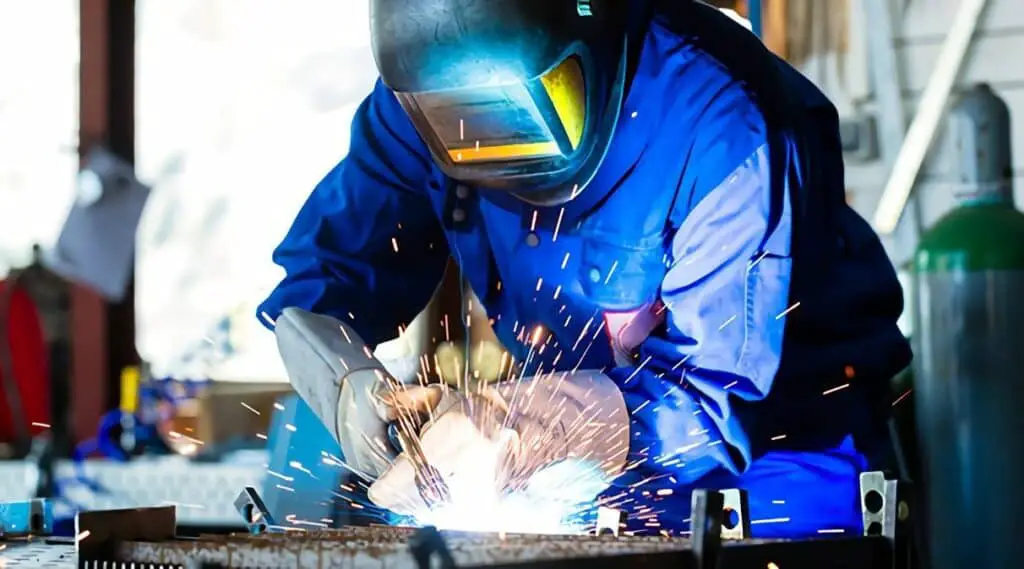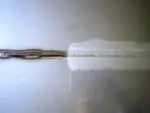Welding may be a strong solution for household repairs or a pleasant new pastime to learn. Whatever your motivation, you’ll need to know how much welding costs before you start fusing metal or hiring a professional because it can be a significant investment.
What makes welding expensive is the cost of various factors involved. A welding operation typically costs somewhere around $300. Small tasks, on the other hand, can cost as little as a hundred dollars, and larger ones might cost thousands. The entire cost is determined by a number of factors, including:
Material and equipment expenses
Labor costs
Welding technique
Breaking down the cost aspects of a welding job may be quite beneficial in terms of saving money.
Let us help you understand by breaking down the overall cost of welding-
Materials, Equipment, and Supplies
Each welding procedure needs its own set of tools and supplies. Some types of welding necessitate a larger initial investment in equipment but save money through the use of less expensive materials or a more efficient process. In most cases, material expenses include:
-
-
- The base metal
- Material for filling
- Change (shielding gases)
- Sanding stones/grinding wheels
-
Labor cost
Welding is more than just an utilitarian means of bonding metal in many aspects. It truly is an art form, which is why, when it comes to hiring a professional, labor prices are the most expensive element.
Labor expenses typically account for 60 to 70 percent of overall project costs, but can reach 85 percent in some cases.
Labor expenses include not just the time spent welding but also the time spent preparing supplies, preheating, inspecting, and cleaning up.
The following factors have a significant impact on labor costs:
1.) Deposition rate: The pace of welding, which is frequently influenced by the type of welding method utilised.
2.) Hourly wage: Generally impacted by the welder’s ability and experience.
3.) Total operation time: This includes prep time, weld time, and clean-up time.
Most welders charge by the hour, however some charge by the square foot. Welders frequently charge a fee to cover travel and transportation. As a result, taking transportable items directly to the store is a simple approach to save money.
What is the most expensive type of welding?
Well the most common types of welding are TIG welding, MIG welding, stick welding and flux welding.
And out of these, TIG is the most expensive kind of welding. TIG welders are the type of welder used by professionals. They deliver a highly professional, clean-looking weld, which is something that professional welders aim for.
Let us give you reasons why TIG welding costs so much-
1.) TIG welding is a time-consuming operation. Because the torch and filler material are separate, you must use both hands for this process.
2.) Does not necessitate the use of a Filler: This is one of the most appealing features of TIG welders. A filler material is not required for a successful weld. This is one of the reasons why so many people are interested in them.
3.) Electrode made of tungsten: The high electrode is another strong selling feature for the TIG welder. Tungsten is the metal with the highest melting point. This alone makes TIG welding well worth the investment.
4.) Clean weld finish: TIG welding does not spatter, resulting in a very clean, professional-looking weld.
5.) Foot pedal: TIG welders have a foot pedal that you may use to regulate the flow of electricity through the tip of the torch. With this foot pedal, you may regulate the quantity of electricity. As a result, it is a very coveted welder.
When to use TIG: TIG is best suited for smaller jobs that need detail or crisp, aesthetically pleasing welds, such as fences, gates, pipes, or sculptural work.
This type of welding is ideal for producing attractive, polished welds with specialist, costly metals. TIG welding is also widely used in automotive and aerospace applications.
Here’s a table that offers a brief overview of the four most frequent forms of welding:
| Process | Base Metal | Metal Thickness | Welding Speed | Operating Cost | Purchase Cost | Skill Required |
|---|---|---|---|---|---|---|
| STICK | Steel, Stainless | 1/8″ & above | Slow | High | Low | Medium |
| MIG | Steel, Stainless, Aluminum | 24 gauge & above | Fast | Low | Medium | Low |
| FLUX | Steel, Stainless | 1/8″ & above | Fast | Lowest | Medium | Low |
| TIG | All | 22 gauge & above | Very Slow | High | High | High |
What is flux in welding and how does it impact its cost?
Arc welding techniques (the most prevalent forms of welding) necessitate the use of a shield to protect against air contaminants.
Impurities like nitrogen, hydrogen, oxygen, and water vapor can contaminate the weld and cause holes, weak joints, and may lead to early corrosion.
Because they do not react with other chemicals, inert gases are needed to construct a shield. They are not combustible and may be used safely during welding.
The following are the most prevalent gases:
Helium is an expensive gas that is utilised with nonferrous metals and stainless steel.
Produces a hotter arc, which enhances weld pool fluidity and travel speed, resulting in increased output.
Argon is a gas that is used in the production of magnesium, aluminium, and titanium. It eliminates spatter and gives a clean appearance. It has a slower flow rate than helium, but it is also less costly.
Carbon dioxide is a common, inexpensive gas that is frequently mixed with other gases. Pure carbon dioxide, on the other hand, is ideal for welding thick materials since it allows for deep weld penetration.
Because different gases are compatible with various metals and welding processes, the gas you select might affect the final cost.
MIG welding, for example, frequently employs carbon dioxide, which is one of several reasons why MIG welding is more cost-effective than other processes.
Does the type of metal impact the cost of welding?
Because welding rates frequently change with metal prices, the metal you select to work with will have an influence on the final cost. It is also the initial stage in the planning process for your welding job.
Once you’ve determined which metal is most suited for the work, you’ll be able to determine which methods are open to you.
Metal expands and softens when heated, making it more malleable. The manner in which metals and metal alloys react to heat have an impact on their usage and applications.
Metals with high weldability are ideal for welding because they are simple to weld while maintaining good quality.
Consider the following factors when selecting a metal to work with:
Melting point: The melting point of a solid is the temperature at which it will melt.
Strength: Resistance to deformation from the original shape is referred to as strength.
Electrical conductivity: The ability of a substance to conduct electricity.
Ductility: Ductility is the ability to withstand being pounded or stretched without breaking.
Cooling rate: affects the metal’s strength, hardness, and ductility.
Shielding gases: Different shielding gases are required for metals to avoid contamination.
However, the best metal for welding are-
Steel: Because of the modest levels of carbon and other alloying elements, low carbon (mild) steel is more ductile than other varieties of steel and has great weldability.
Its adaptability enables it to function with a wide range of welding processes. It is also one among the least costly metals to deal with.
See also: What Type of Flame is Used to Weld Mild Steel?
Stainless Steel: Despite its complicated chemical makeup, stainless steel is noted for its strong corrosion resistance and weldability. Only ferritic and austenitic stainless steel grades can be readily welded, as martensitic steel cracks.
It is also one among the most economical metals to deal with, with a pound costing between $13 and $15 on average.
Aluminum: Aluminum is more harder to deal with than steel, yet it is still weldable. High thermal conductivity necessitates the use of a welder capable of producing the required heat.
Aluminum is lighter than stainless steel and shrinks much more, so you’ll have to be extra careful to avoid craters and cracks. It costs more than steel but less than other metals.
Since we have already established the points on why welding is expensive, here are a few tips on how to reduce the cost and weld on a budget.
1.) If possible, go for a low cost welding technique. Which means, if it is not required, go for FLUX or STICK welding.
2.) Combine Welding Costs with Other Fabrication Expenditures. If you hire a welding contractor, you may also outsource other fabrication procedures. Combining welding and other manufacturing operations into a single package will be considerably cheaper.
3.) Use Smart Design Approaches to Cut Down on Unnecessary Welds. Contacting a welding contractor is a simple and safe approach to eliminate needless welds. They have the knowledge to change the design of a product such that it just takes a few welds.
4.) Comprehend Welding. Welding is a combination of both skill and science. The sequence in which welds are performed has an impact on product quality.
Unwanted distortion and change may be controlled with the correct welding method and techniques, resulting in higher quality and shorter fabrication times.
5.) Make your own welding cart. If you want to get a welding cart from the market, you need to be prepared to shell out at least $100.
However, there is no need to spend this much money when it can be accomplished with acceptable care and a relatively modest skill level.
There are various DIY tutorials for creating these carts on the internet. Check this DIY (Do it Yourself) video for reference-
1.) Go to the Steel Yard. If you are just beginning to practise, scrap steel will suffice. For welding practice, you don’t need to spend a lot of money on high-quality finished steel.
Check out the scrap pile at your local steel yard. You may choose things in good condition and get a decent discount.
2.) Examine Your Welding Expenses. If you are a do-it-yourself welder, you should look for good deals on supplies and equipment.
Material prices are frequently just around 20% of the overall cost, while overheads and labour account for roughly 80% of the total welding cost.
3.) Use Welds Cautiously. Welds can also be employed to cut expenses. They may be a better solution for intricate forms than casting them in their whole.
As a result, if cost reductions are achievable, welds should be employed during fabrication.
Conclusion
Welding may be an expensive job, but it does involve hard work and a lot of time. Always consider all your options properly, and also read about welding as much as you can in order to make a wise decision.
However, we have included all that we think is necessary for your knowledge about welding in this article. Hope it helps.







